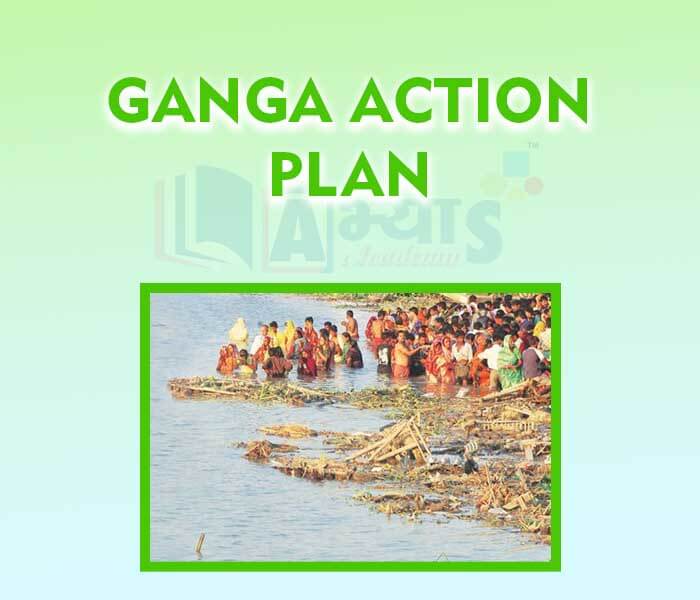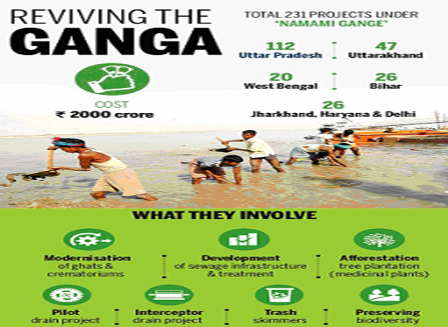Ganga Action Plan









Ganga Action Plan
Ganga Action Plan (GAP): River Ganga runs its course of over 2500 kms from Gangotri in the Himalayas to Ganga Sagar in the Bay of Bengal through many cities. During the course, it becomes polluted due to sewage disposal and other human activities. The Ganga Action Plan was launched by Mr. Rajiv Gandhi, the then Prime Minister of India on 14th January 1986. The main aim of GAP is the diversion and treatment of sewage, prior to its disposal into the Ganga. The plan also includes active participation and awareness in public about the cleaning of the Ganga.
Effects of Poor Sanitation: Poor sanitation is the root cause of many diseases. In our country, many people still do not have sewerage facilities. These people are forced to defecate in open places, near railway tracks, agricultural fields or on the river banks. Villagers defecate in the open, on dry river beds, fields and even directly in water bodies. This untreated human excreta is the source of water and soil pollution. The polluted water seeps through the ground and contaminates underground sources of water like wells and springs. When this contaminated water is used for drinking and other purposes, it causes many diseases like cholera, typhoid, polio, meningitis, hepatitis and dysentery. The called waterborne diseases.

Which of the following is a water borne disease ? | |||
| Right Option : D | |||
| View Explanation | |||
Which one is odd among the following options? | |||
| Right Option : C | |||
| View Explanation | |||
The main cause for abudant coliform bacteria in the river Ganga is: | |||
| Right Option : A | |||
| View Explanation | |||
Students / Parents Reviews [10]
It was good as the experience because as we had come here we had been improved in a such envirnment created here.Extra is taught which is beneficial for future.

Eshan Arora
8thIt was a good experience with Abhyas Academy. I even faced problems in starting but slowly and steadily overcomed. Especially reasoning classes helped me a lot.

Cheshta
10thMy experience with Abhyas academy is very good. I did not think that my every subject coming here will be so strong. The main thing is that the online tests had made me learn here more things.

Hiya Gupta
8thAbout Abhyas metholodology the teachers are very nice and hardworking toward students.The Centre Head Mrs Anu Sethi is also a brilliant teacher.Abhyas has taught me how to overcome problems and has always taken my doubts and suppoeted me.

Shreya Shrivastava
8thAbhyas is a complete education Institute. Here extreme care is taken by teacher with the help of regular exam. Extra classes also conducted by the institute, if the student is weak.

Om Umang
10thOne of the best institutes to develope a child interest in studies.Provides SST and English knowledge also unlike other institutes. Teachers are co operative and friendly online tests andPPT develope practical knowledge also.

Aman Kumar Shrivastava
10thI have spent a wonderful time in Abhyas academy. It has made my reasoning more apt, English more stronger and Maths an interesting subject for me. It has given me a habbit of self studying

Yatharthi Sharma
10thAbhyas Methodology is very good. It is based on according to student and each child manages accordingly to its properly. Methodology has improved the abilities of students to shine them in future.

Manish Kumar
10thIt has a great methodology. Students here can get analysis to their test quickly.We can learn easily through PPTs and the testing methods are good. We know that where we have to practice

Barkha Arora
10thBeing a parent, I saw my daughter improvement in her studies by seeing a good result in all day to day compititive exam TMO, NSO, IEO etc and as well as studies. I have got a fruitful result from my daughter.
